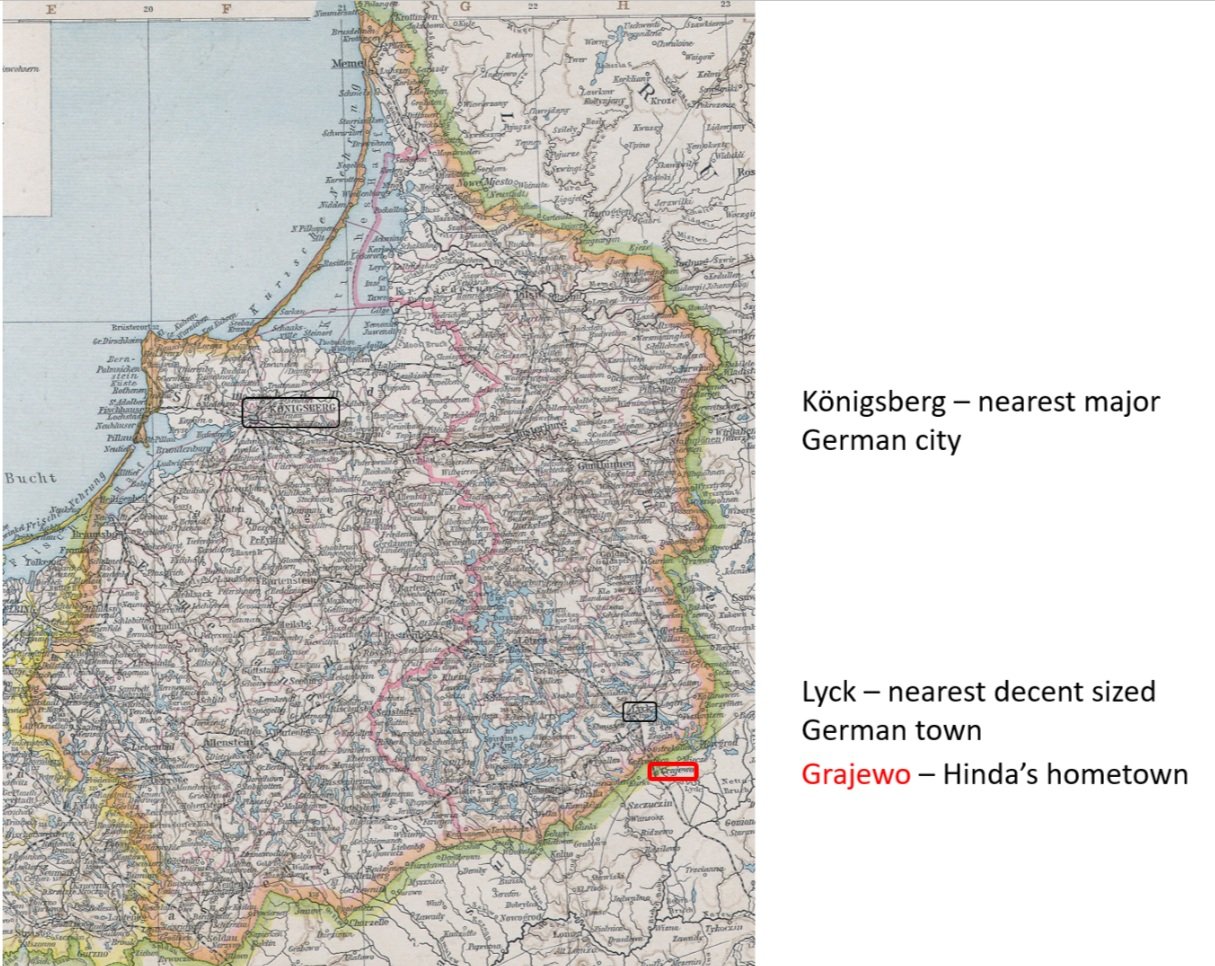Samplers are a type of embroidery traditionally used to showcase a person's needlework skills. During the 17th and 18th centuries, samplers became increasingly popular. They were common as a way to learn needlework and teach different stitching techniques. Samplers were also used as a way to record family history, often given as gifts or hung on the wall as a decorative item.
Textile sampler before treatment
This sampler was made by the owner's grandmother, Hinda, presumably from a pattern likely acquired in Germany. Hinda was born in 1904 in Grajewo, present-day Poland, then Russian Empire. Her parents had a small shop selling items like caps and household items. They likely purchased this sampler pattern while purchasing other items in Germany for their shop. The family shared that Hinda would have been around eight years old when she stitched this sample, dating it circa 1912.
This map shows Hinda’s hometown of Grajewo, near the German border.
For years the sampler hung in the kitchen of her grandson Josh. But, when he attempted to clean it and discovered just how fragile the fibers had become, the sampler was brought to The Center so that it could be treated by our textile conservator. The sampler is stitched with silk embroidery on a cotton hopsack needlepoint canvas. The construction includes hanging loops along the top edge and crochet lace trim along the bottom edge, designed for hanging. As the owner discovered when he attempted to clean the textile at home, the fabric was deteriorated and fragile, with numerous splits and tears throughout, with fraying along the top edge.
Detail of sampler before treatment. The text translates to “My dear, today it tastes fine”
Although the client had already attempted to wash the textile, staining and soiling remained. For the first treatment step, the fabric was encased between mesh to protect the cloth during the cleaning process and the careful introduction of water. Wet cleaning was carried out to reduce soiling, using the appropriate conservation methods and materials that would be gentle for the delicate fibers. Once cleaned, the textile was stitch mounted to a linen-covered mount to conservation standards. The linen selected is a neutral tone slightly darker than the ground fabric, leaving a contrasting border around the perimeter. Mounting the textile also limits the stress on the fibers from hanging. It also allows for the realignment of the tears. Where the cotton canvas was damaged, it was underlaid with similarly colored cotton to prevent the darker linen from being visibly distracting in those areas.
While her family wanted her to stay, Hinda felt there was no future for her in Poland. So, she emigrated to Chicago at age 18, around 1922, between World War I and World War II. Sadly, her family, who remained in Poland, all perished in the Holocaust. The sampler came to Chicago with Hinda, who eventually passed it on to her grandson when she passed in 1993, and to Josh it remains a "memento of a vanished civilization." This delicate and darling needlepoint has returned to the home of Hinda's grandson, a reminder of family ancestors and their cultural history. Josh shared, "I tried to wash it after it had been hanging on my kitchen wall over the sink for many years, and it basically started falling apart. I thought it was done for, but it looks beautiful now and is back in the same place." It is a privilege to revive artwork that may seem damaged beyond repair, allowing its story to continue for generations to come.






